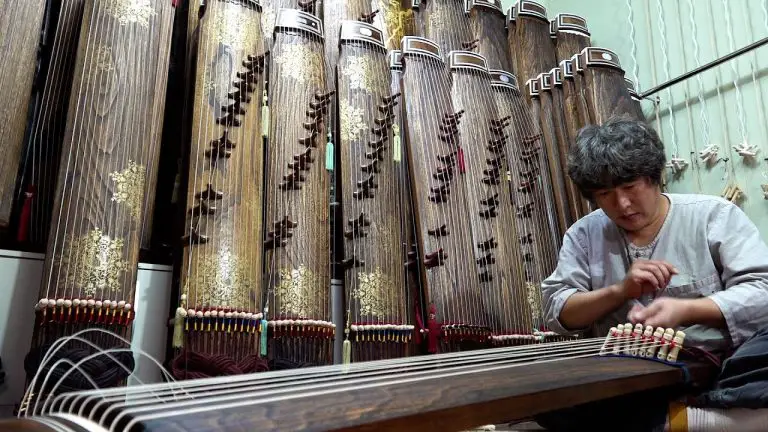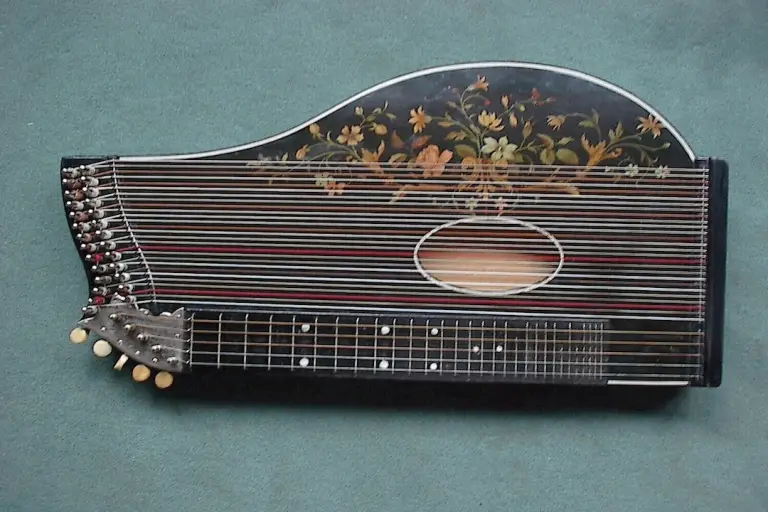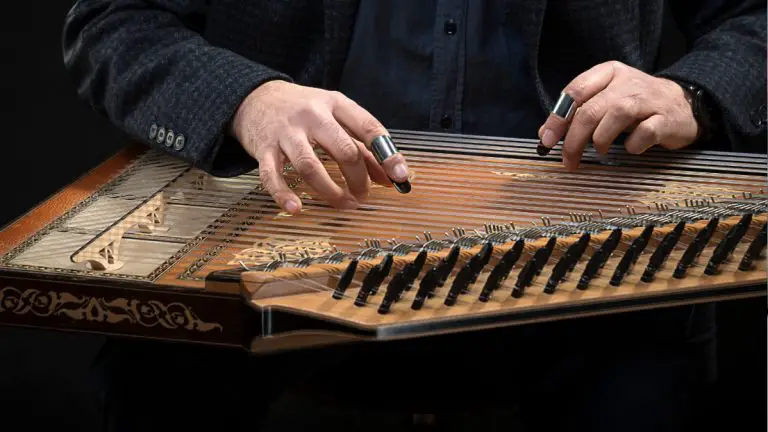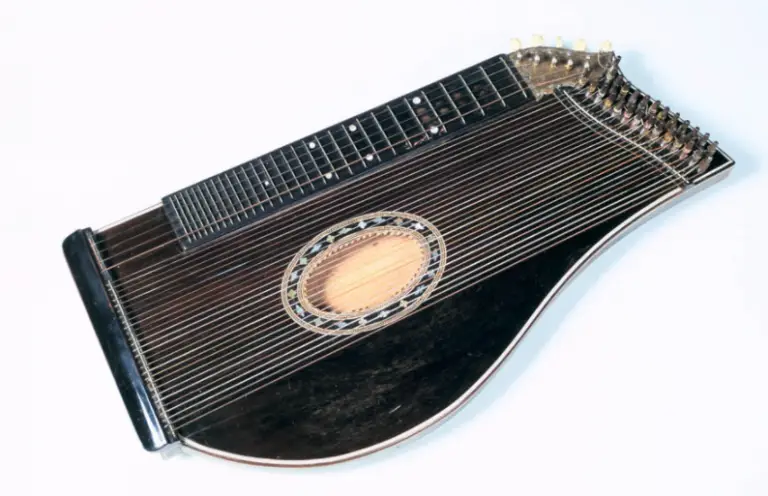Should I Learn the Zither? Exploring the Benefits of This Unique Instrument
Folkstrings.com is reader-supported. When you buy through links on our site, we may earn a small commission.
Deciding to learn a new musical instrument is an exciting venture. The zither, with its unique charm and sound, offers a distinctive choice.
As a stringed instrument, the zither has a rich history and a presence in various musical genres. It resonates with a diverse audience who appreciate its melodious potential.
The practicalities of learning to play the zither rest on its availability, the complexity of its technique, and whether its music speaks to you on a personal level.
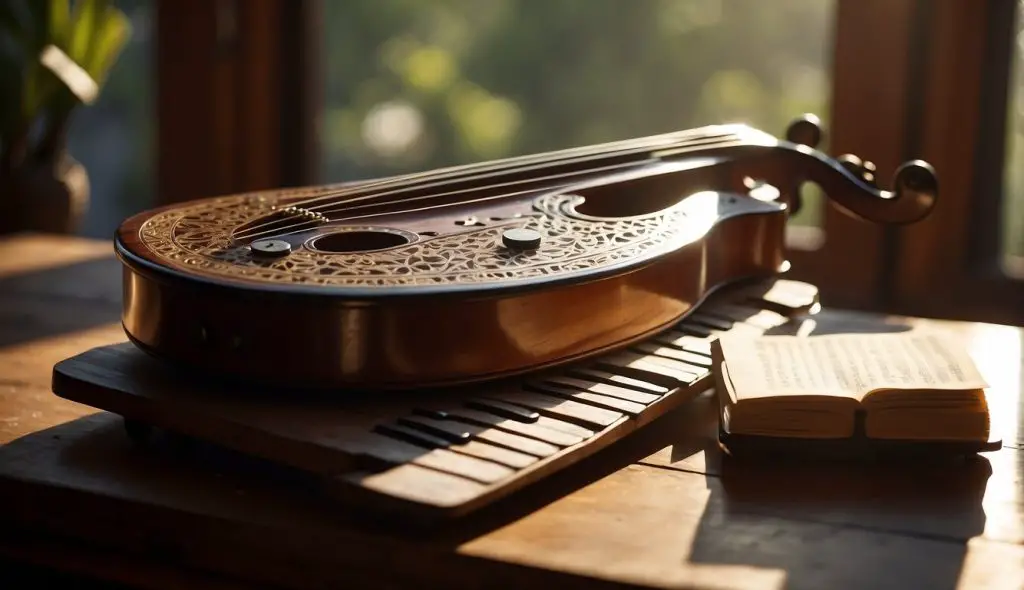
As someone with a passion for music, I consider the cultivation of skills integral to mastering any instrument, and the zither is no exception. It requires dedication to learn and perfect the positioning and movement of fingers across its strings.
It’s also vital to learn about the instrument’s maintenance to ensure its longevity and sound quality. Engaging with the zither community can answer many frequently asked questions and provide a supportive environment to foster learning and growth.
Key Points
- Learning the zither offers a unique opportunity to explore a rich musical tradition.
- Dedication to skill development and instrument care is crucial for mastery.
- Community engagement can enhance the learning experience and provide valuable insights.
Table of Contents
The Zither Explained
In this section, I’ll provide you a glimpse into the zither’s rich heritage, the variety it offers, and the details of its construction.
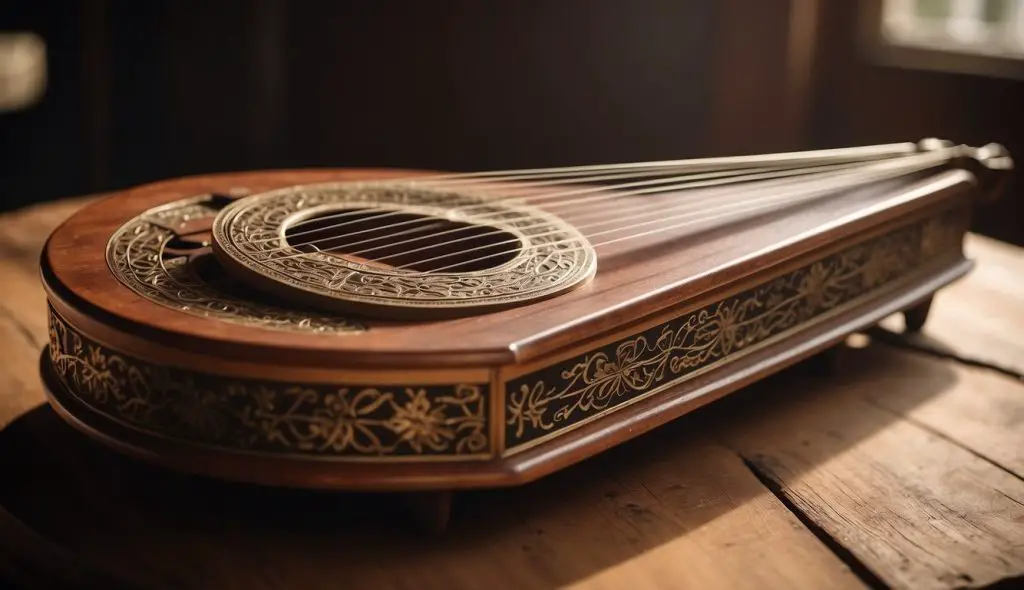
History and Origins
The zither has a deep-rooted history that spans across several countries including Germany, Austria, Slovenia, and Hungary. As a family of stringed instruments, zithers have been around in some form for centuries. However, it was in the 19th century when they gained prominence, especially in the Alpine regions.
Different Types of Zithers
There are several types of zithers, each with their unique features. The Alpine zither and the concert zither are known for their lush, melodious sound. The chord zither, which often includes a section of strings that are tuned to chords, makes it easier for beginners. Additionally, the autoharp is a type of zither that uses a series of bars to mute strings not in the chord being played.
Anatomy of the Zither
My exploration into the zither’s structure reveals an intricate design. Generally, a zither consists of a flat body with strings stretched over it. The number of strings can vary, with the concert zither having 29 to 31 and the Alpine zither around 42 to 45. Players pluck or strum these strings, which are divided into melody and accompaniment sections, to produce sound. This duality allows a zither to create full musical textures that are both rich and captivating.
Learning to Play the Zither
When I set out to learn the zither, I quickly realized it encompasses mastering a few techniques and finding the right resources for guidance. Strong fundamentals are crucial, as is the help of a knowledgeable teacher or comprehensive resources. https://www.youtube.com/embed/EEgjQYFiL94
Basic Techniques
The first thing I did was familiarize myself with basic techniques. The zither demands precise tuning to ensure the instrument produces the correct tones. My initial focus was on plucking and strumming the strings correctly. Here are the key points I focused on:
- Tuning: Ensuring each string is at the correct pitch.
- Plucking: Using my fingers to make individual strings vibrate.
- Strumming: Moving my hand across multiple strings to play chords or melodies.
Advanced Techniques
As I progressed, advanced techniques added depth to my playing. I spent time understanding how to create dynamic sound variations and integrating complex strumming patterns. This phase included techniques like:
- Vibrato: Creating a shimmering effect by oscillating the pitch of the note.
- Muting: Briefly touching the string after plucking to stop the sound, creating a staccato effect.
Finding a Zither Teacher or Resources
I found that locating a skilled zither teacher or resources was essential to advancing my skills. A good instructor can offer personalized feedback that is invaluable. For those who may not have access to a local teacher, there are online resources such as video tutorials and e-books. Here’s a quick list of what to look for:
- Credentials: Ensure the instructor is experienced and has a good reputation.
- Teaching Style: Choose a teacher whose style suits my learning pace and preferences.
- Online Resources: Look for high-quality video tutorials and well-reviewed teaching materials.
Essential Playing Skills
Learning to play the zither is an engaging journey that requires mastering several key techniques. In this section, I’ll go over the crucial skills you’ll need to focus on, from the way you position your fingers to your ability to understand sheet music and develop muscle memory.
Finger Placement and Picks
When I play the zither, proper finger placement is fundamental for precision and comfort. I make sure my fingers are positioned correctly on the strings to achieve the desired pitch and tone. Finger picks, which are often used on the thumb and sometimes on other fingers, are essential tools that enhance the sound and protect my fingertips. These picks can vary in material, with metal and plastic being common choices.
Reading Music and Sheet Music
I’ve found that the ability to read music and sheet music is incredibly important for following complex compositions and fostering musical literacy. Zither sheet music displays notes corresponding to each string, and interpreting them accurately is a must for proper execution. Reading music involves understanding musical notation, including symbols for pitch, rhythm, and dynamics.
Developing Muscle Memory
Lastly, developing muscle memory is a critical skill for playing the zither effectively. Through regular practice, I train my fingers to move swiftly and accurately without needing to concentrate on each note. This skill allows me to focus more on expression and dynamics in my playing, rather than where my fingers should go next.
Zither Music and Musical Genres
In exploring the zither, it’s important to understand its versatility across various music genres and contexts. From playing solo to joining an ensemble, the zither adapts and shines.
Playing Solo and With Accompaniment
When I play the zither solo, it serves as a self-sufficient instrument. The range of sounds it can produce, from delicate trills to rich, resonant tones, makes solo performances deeply expressive and fulfilling. Historically, playing the zither solo has been valued in Chinese music, especially with the seven-stringed qin, often associated with learned and philosophical aesthetic appreciation.
However, integrating the zither into an ensemble as an accompaniment creates a rich tapestry of sound. Playing with other musicians, the zither adds depth and character to the collective harmony. It’s fascinating to use the zither in accompaniment because it complements other instruments, whether in classical orchestras or more contemporary music groups, bringing a unique texture to shared musical experiences.
Exploring Genres with the Zither
My journey with the zither across various musical genres has revealed its expansive range. Traditional Chinese music genres, for instance, place the Guzheng at the forefront, offering a classic and recognizable sound. With the evolution of music, the instrument has adapted to modern genres, finding its place in compositions ranging from pop to experimental music.
In world music, the zither doesn’t shy away; African instruments like the Segaba are akin to the zither and add regional flavors to melodies. These variations extend the zither’s domain beyond its traditional boundaries, allowing performers to traverse an array of musical landscapes. Embracing the zither’s adaptability has led to innovative music production and a growing appreciation for its place across diverse musical genres.
Caring for Your Zither
Maintaining my zither properly ensures that it sounds beautiful and lasts a long time. Regular maintenance and timely upgrades keep it in top playing condition.
Maintenance and Tuning
I check my zither regularly for any signs of wear or damage. I gently clean the body and strings with a dry, soft cloth to remove dust and oils. Ensuring the tuning pegs are secure is vital; I tune my zither often using a reliable tuner for accuracy. It’s crucial to not over-tighten the strings, which could cause them to break or damage the instrument. Here’s how I keep up with maintenance:
- Weekly Cleaning: Wipe down with a soft cloth.
- Monthly Checkup: Inspect for loose parts or damage.
- Tuning: Before each use, check the tuning and adjust as needed.
When to Replace or Upgrade
I know it’s time to replace my zither strings when they start to sound dull or have difficulty holding their tuning. When they show signs of physical wear like fraying, it’s a clear indicator that they need replacement. If my needs as a musician grow or if I notice my current zither isn’t producing the sound quality I desire, an upgrade to a new zither might be in order. Here are the key points I consider for replacement or upgrading:
- String Condition: Change strings if they’re damaged or have lost their tone.
- Sound Quality: If the zither no longer sounds vibrant, it might be time for new strings or possibly a new instrument.
- Playing Needs: Should my skills outgrow my current zither, I’ll look for a new one that better meets my advanced needs.
Frequently Asked Questions
As someone keen on exploring musical instruments, I’ve gathered some common questions about learning the zither, so let’s dive right in.
How challenging is it to become proficient at playing the zither?
Mastering the zither requires patience and practice. Its unique layout may initially seem daunting, but with consistent effort, the complexities become manageable.
What are some tips for beginners interested in learning the zither?
My tip for new players is to start with familiarizing yourself with the instrument’s anatomy. Begin with simple melodies to build finger strength and dexterity before progressing to more intricate compositions. Also, don’t forget to regularly tune your zither for the best sound quality.
Can playing the zither have any specific benefits or uses?
Absolutely. Playing the zither can enhance fine motor skills, boost cognitive function, and provide a relaxing and satisfying hobby. It’s also a great conversation starter and a unique skill that can set you apart from other musicians.
How does the zither compare to other string instruments in terms of learning curve?
The zither has a distinct learning curve, especially due to its flat layout and number of strings. I find it less intuitive than guitar or piano initially, but with dedicated practice, it becomes just as rewarding to play.
Where can one find a zither and the necessary resources to start learning?
Zithers can be found at specialized music stores or online through various instrument retailers. For resources, consider searching for instructional books, videos, and most importantly, a reputable teacher if possible.
What amount of time is typically required to become adept at zither music?
The time it takes to become adept at playing the zither varies by individual. Committing to regular, structured practice sessions will typically yield noticeable progress within a few months to a year.
Author Profile
-
Daniel Johnstone is an English writer with a love for stringed instruments from around the world.
He shares his love for these instruments through his writing for folkstrings.com, a website dedicated to all things related to folk string music.
Daniel's passion for music started at a young age, and he has since become an accomplished musician, playing guitar, cavaco, and recently, the harp.
His dedication to learning and sharing his knowledge of stringed instruments is evident in his insightful and engaging blog posts. Whether you're a seasoned musician or a beginner, Daniel's writing is sure to inspire and entertain you.
When he's not playing music or writing, you can find Daniel exploring new instruments and seeking out new sounds to share with his readers.
Latest entries
 AutoharpApril 4, 2024What Is the Autoharp Made Of: Exploring Its Materials and Craftsmanship
AutoharpApril 4, 2024What Is the Autoharp Made Of: Exploring Its Materials and Craftsmanship AutoharpApril 4, 2024Is Autoharp Easy to Play? Unveiling the Truth for Beginners
AutoharpApril 4, 2024Is Autoharp Easy to Play? Unveiling the Truth for Beginners AutoharpApril 4, 2024What Is an Autoharp Worth? Your Guide to Pricing and Value
AutoharpApril 4, 2024What Is an Autoharp Worth? Your Guide to Pricing and Value AutoharpApril 4, 2024Are Autoharp and Zither the Same Thing? Unraveling String Instrument Myths
AutoharpApril 4, 2024Are Autoharp and Zither the Same Thing? Unraveling String Instrument Myths
Affiliates:
This post may contain affiliate links that at no additional cost to you, the site may earn a small commission. We only recommend products we would use ourselves and all opinions expressed on this site are our own.
Accuracy Advice:
While we strive to provide up-to-date and accurate information, the content in this article may not reflect the most current research or medical guidelines. We encourage readers to do further research and consult with professionals for more personalized advice.
Our Recommendations:
The products and services mentioned in any of our articles are recommended based on our independent research and personal experience. We are not sponsored by any company. We aim to suggest products and services we believe are of high quality and could be beneficial to our readers.


